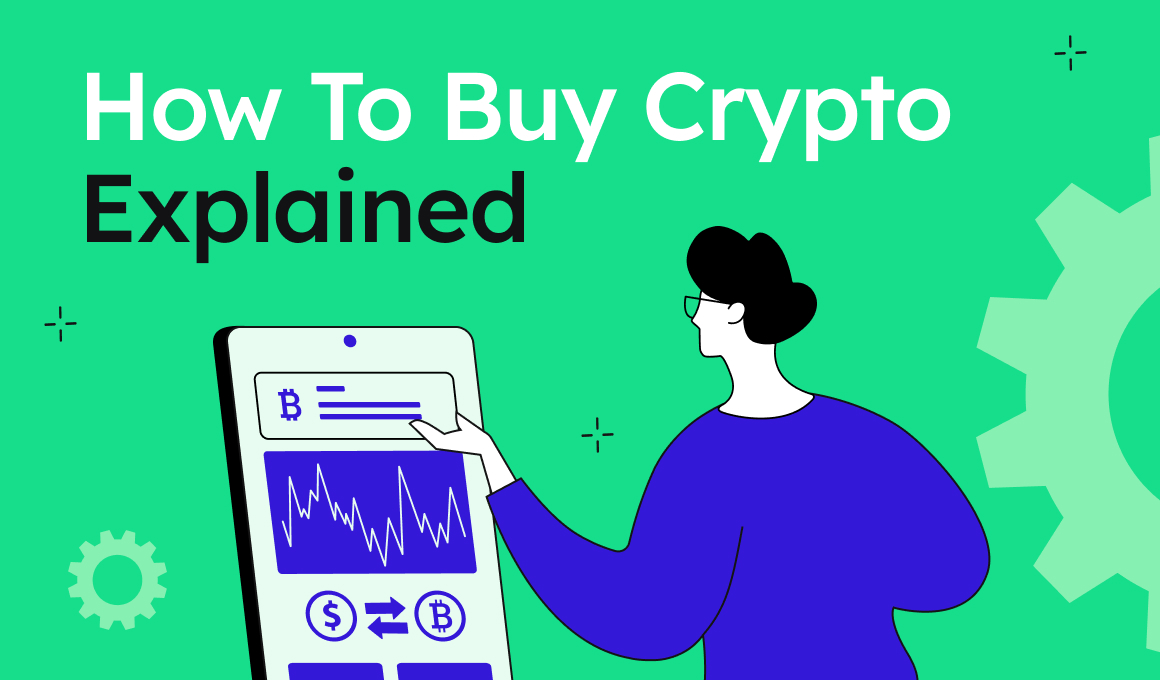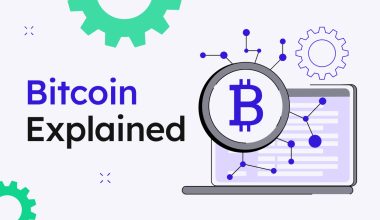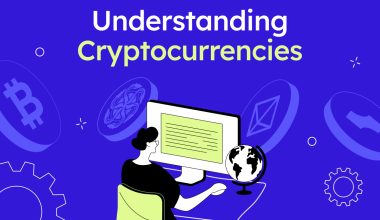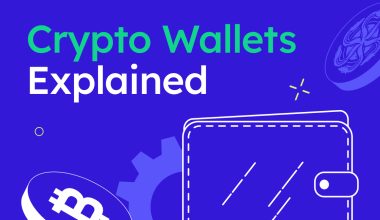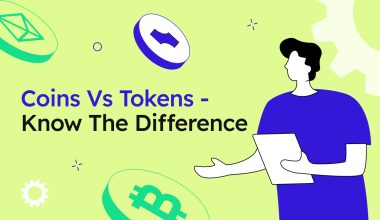So, you’ve decided to get into crypto but are not sure where to start. Fret not, we will explain everything.
Unlike traditional stocks and bonds, cryptocurrencies are decentralized, digital assets that operate independently of governments or financial institutions. If you’re interested in investing in cryptocurrency, this guide will walk you through the process of buying and selling digital assets.
Where to buy your first crypto
Option 1: A Cryptocurrency Exchange
A cryptocurrency exchange is a digital platform that allows users to buy, sell, and trade cryptocurrencies. There are many cryptocurrency exchanges to choose from, each with their own features, fees, and security measures.
Choosing a reputable exchange
When choosing a cryptocurrency exchange, it’s important to consider factors such as:
- Security: Look for an exchange that has strong security measures, such as two-factor authentication and cold storage.
- Fees: Some exchanges charge high fees for transactions, while others offer more competitive rates.
- Cryptocurrencies available: Different exchanges offer different cryptocurrencies. Choose an exchange that supports the cryptocurrencies you’re interested in.
- User experience: Look for an exchange with a user-friendly interface and responsive customer support.
- History: Do your own research and look into the exchange’s past. Look for lawsuits, controversies, or scandals – basically anything that can tip you off that something’s not right.
Option 2: Getting a non-custodial wallet with fiat capabilities
Creating a non-custodial wallet is an important step for anyone who wants to hold and manage their own cryptocurrencies without relying on a third party. With the advancement of the technology in recent years, DeFi wallets now also offer fiat on-ramps, which means that you can buy crypto right from the wallet with your debit card or via bank transfer. This is extremely convenient because you buy the crypto from the safety of the wallet, you save money on transaction fees, and you need one app for all operations.
Read here: Introduction to crypto wallets and how to choose one
Choosing a wallet
There are many different types of wallets available, including hardware wallets, software wallets, and mobile wallets. Make sure to choose a wallet that supports the cryptocurrencies you want to store.
To significantly simplify your crypto buying experience, also choose a wallet with a fiat on-ramp – this will let you easily buy crypto in seconds. Some great fiat-enabled wallets include Trust wallet and the Changex wallet.
Things to look for in a DeFi wallet
Compatibility: Make sure the DeFi wallet you choose is compatible with the cryptocurrencies you want to store and trade. Some wallets support only a limited number of cryptocurrencies, while others support a wide range.
Security features: Look for a wallet that has robust security features, such as two-factor authentication and encryption.
Research reputation: Look for a wallet with a good reputation and a track record of security. Research the wallet provider’s history, reviews, and ratings before deciding on a wallet.
User-friendly interface: Choose a DeFi wallet with a user-friendly interface that is easy to navigate and use. Some wallets may have a steep learning curve, while others are designed to be intuitive and user-friendly.
Buying Cryptocurrency
To buy cryptocurrency, you’ll need to navigate to your exchange or DeFi wallet of choice. The processes differ somewhat, so we’ll explain them separately.
On a CEX
After you’ve setup and secured your account, you can proceed to choose the cryptocurrency you want to buy. Follow the instructions to find your asset and enter the amount you’d like to spend. The interface and process for buying crypto will depend on each individual exchange, but it’s generally intuitive and quite easy to do.
You can also choose the type of order you’d like to place, such as a market order or a limit order. A market order will execute immediately at the current market price, while a limit order allows you to set a specific price at which you’d like to buy or sell your cryptocurrency. Once your order is executed, your cryptocurrency will be deposited into your centralized exchange wallet.
Read more: Types of cryptocurrency orders and how to use them
In a DeFi wallet
If you decide to use a DeFi wallet instead, you can either choose to use the wallet’s fiat on-ramp functionality to buy your crypto directly in the wallet, or you can buy it on an exchange and then send it to your wallet. Whichever it is, a non-custodial wallet is your best bet for staying safe in crypto.
To use on-ramp capabilities, which take DeFi wallets closer to the functionality of centralized exchanges, you need to look for a Buy button, as opposed to a Swap button. Swaps are only possible if you have crypto in the wallet to swap from. Buying requires only your debit or credit card, and you’re good to go.
Clicking on Buy will let you choose the amount you want to spend, as well as inform you of any fees. Choose your amount and procced.
This will take you to a know-your-customer (KYC) interface, where you will have to provide some data about yourself. Don’t panic – this is completely normal for all fiat operations, and providers of such services must comply with regulations. The instructions are generally laid out very well, so the process is quite intuitive. The KYC process takes no more than 5 minutes to complete.
Once done and when your transaction is completed, you will receive the crypto into your wallet. You can then choose to stake your crypto or use it or other purposes – this is the beauty of non-custodial wallets: you can do whatever you want.
Selling Cryptocurrency
To sell cryptocurrency, the process is similar to buying, but if you want to sell for fiat currency, i.e. government-issued currency like USD or EUR, you’re limited to CEXs – for the time being. In a DeFi wallet, you can only swap for another crypto, and then transfer it to a CEX, where you can sell for fiat.
Selling will take you back to the trading platform where you can choose the cryptocurrency you’d like to cash out. Enter the amount you’d like to sell and the type of order you’d like to place. Once your order is executed, the funds will be deposited into your exchange account.
Keep in mind that you can only withdraw to your bank account from centralized exchanges, but things are moving fast and this might change very soon.
Fees
There are different types of fees in crypto and understanding them is important for traders to make informed decisions about their investments. Here are some of the most common types:
Trading Fees
Trading fees are the fees that an exchange charges for executing trades on their platform. These fees can be charged as a percentage of the total trade amount or as a fixed amount per trade. The trading fee may vary depending on the trading volume or the user’s account level.
Deposit and Withdrawal Fees
Deposit and withdrawal fees are the fees that an exchange charges for depositing or withdrawing cryptocurrencies or fiat currency. These fees can be charged as a fixed amount or as a percentage of the transaction amount.
Network Fees
Network fees are the fees charged by the blockchain network for processing transactions. These fees are usually paid in the form of the cryptocurrency being sent and are used to incentivize miners to process transactions. Network fees can vary depending on the current network congestion and the amount of traffic on the blockchain.
Security Considerations
When buying and selling cryptocurrency, security should be a top priority. Cryptocurrency exchanges can be targeted by hackers, and it’s important to take steps to protect your digital assets. Here are some security considerations to keep in mind:
- Use two-factor authentication: Most cryptocurrency exchanges offer two-factor authentication, which adds an extra layer of security to your account.
- Use a strong password: Use a unique, complex password for your exchange account.
- Store your cryptocurrency in a secure wallet: Consider using a non-custodial wallet to store your cryptocurrency, rather than leaving it on the exchange. This can help protect your assets from potential hacks or security breaches on the exchange.
- Keep your private keys safe: If you do choose to use a non-custodial wallet, make sure to keep your private keys safe and secure. Private keys are like the password to your cryptocurrency wallet and should not be shared with anyone else.
- Beware of phishing scams: Be wary of emails or messages that appear to be from your exchange, asking for personal information or login details. These may be phishing scams designed to steal your information.
It’s important to do your own research and take steps to ensure the security of your cryptocurrency investments.
Read more: How to stay safe in crypto.
Final thoughts
Buying and selling cryptocurrency may seem intimidating at first, but with a little bit of research and preparation, it can be a straightforward process. Choosing a reputable cryptocurrency exchange, setting up an account, and understanding the different types of orders and fees are all important factors to consider when buying and selling digital assets. And of course, don’t forget to prioritize security and take steps to protect your investments from potential hacks or security breaches. With these considerations in mind, you’ll be well on your way to investing in the exciting world of cryptocurrency.
